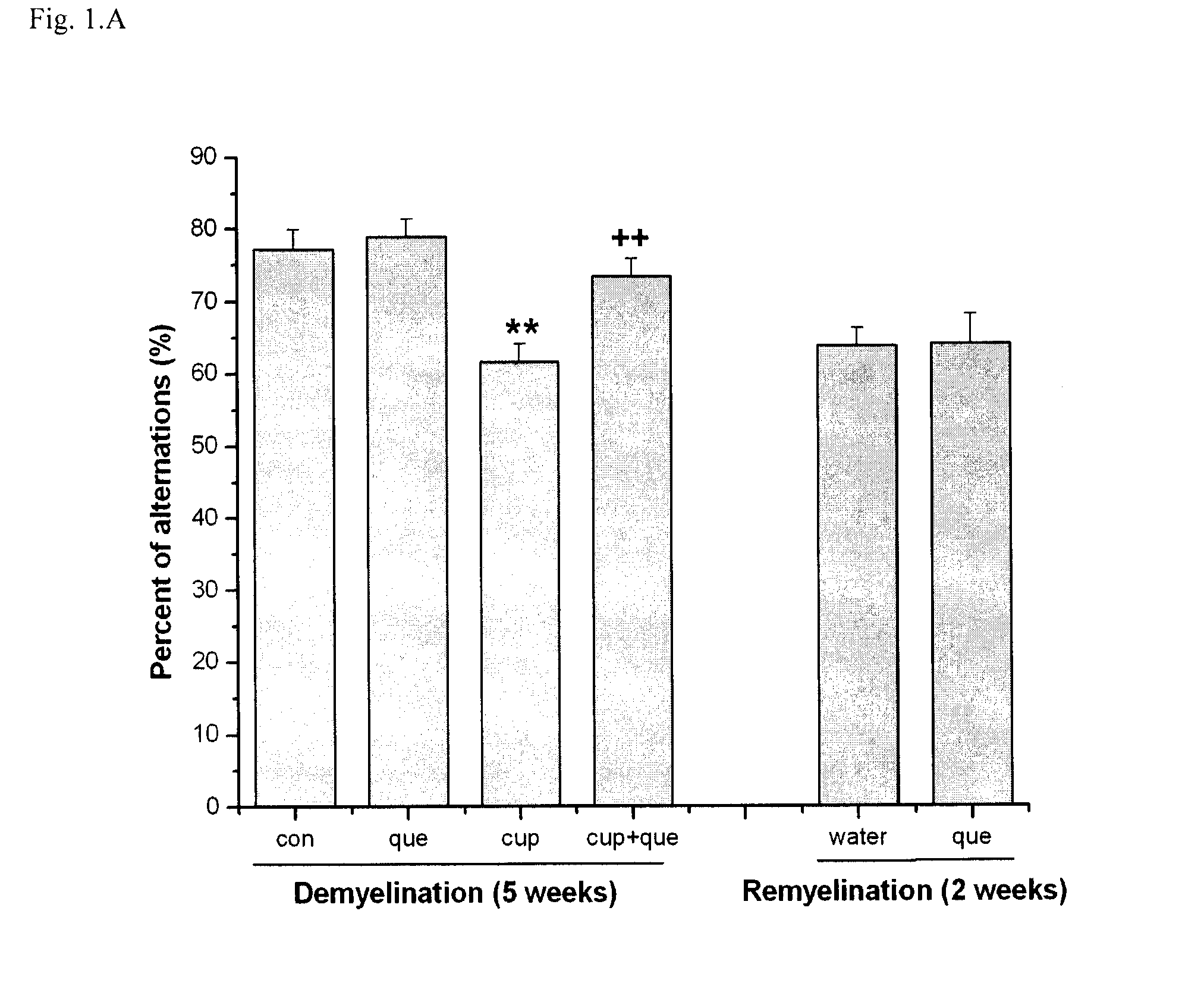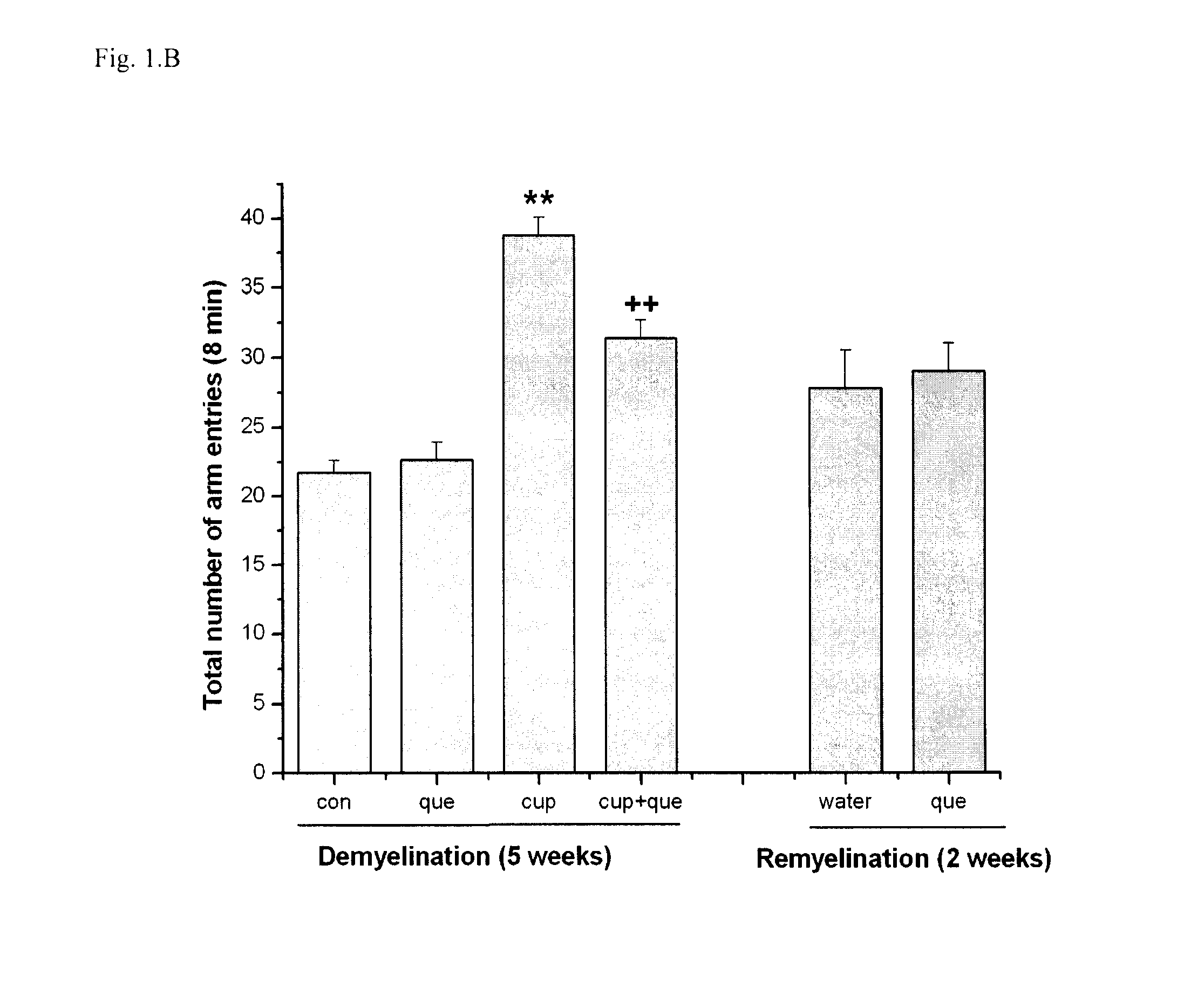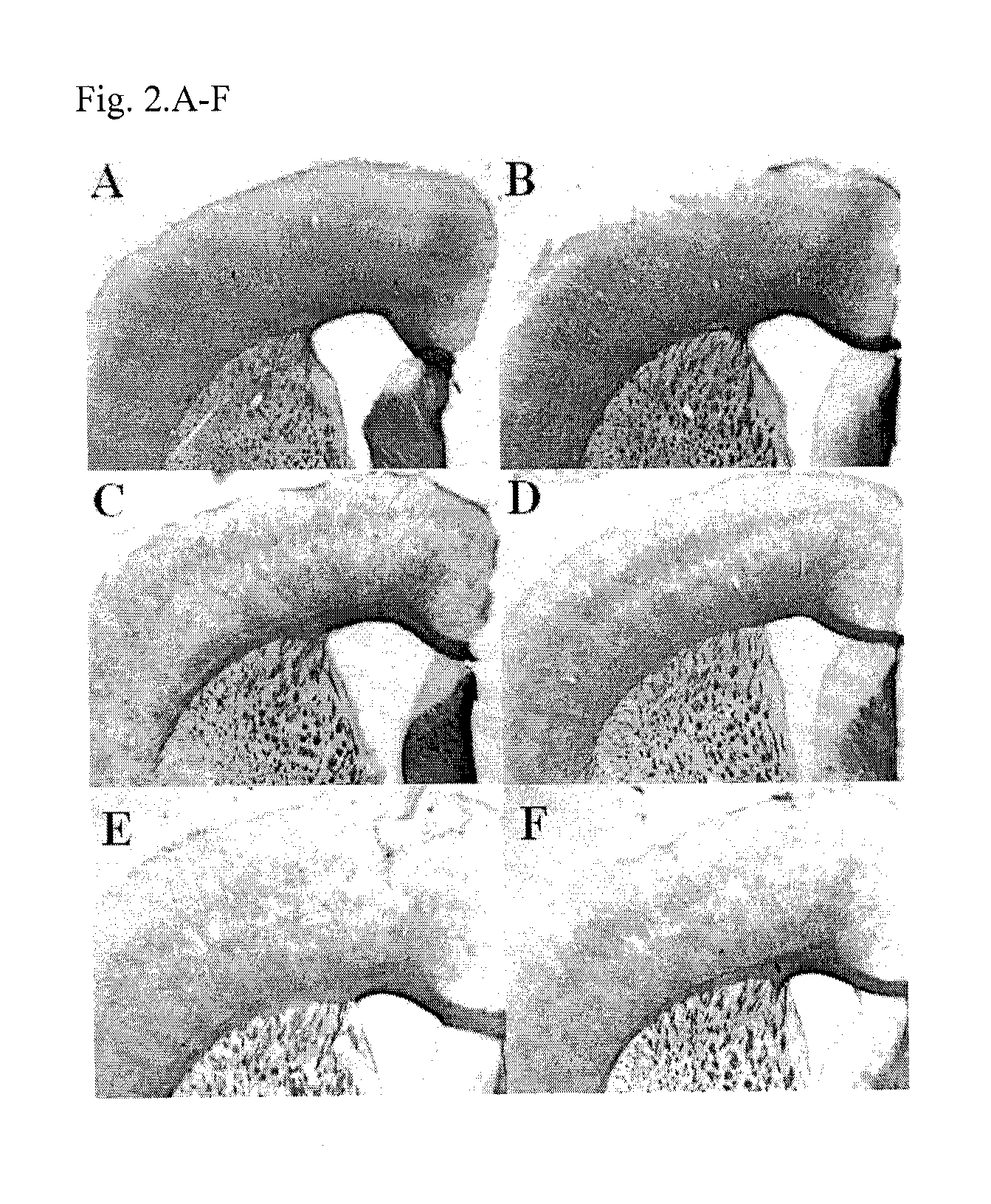Method of treating demyelination diseases
a demyelination disease and demyelination technology, applied in the field of demyelination disease treatment, can solve the problems of neurologic deficit, large number of neurological deficits, rapid repair, regeneration, etc., and achieve the effects of reducing demyelination, promoting mature oligodendrocyte resettlement, and reducing demyelination
- Summary
- Abstract
- Description
- Claims
- Application Information
AI Technical Summary
Benefits of technology
Problems solved by technology
Method used
Image
Examples
example 1
Cuprizone Markedly Impaired Spontaneous Alternation Behavior that can be Reversed by Co-administration with Quetiapine
[0076]In the present study, it was found that 0.2% cuprizone administration for 5 weeks markedly impaired spontaneous alternation behavior in the Y-maze and increased the total number of entries in Y-maze arms. Co-administration of quetiapine (10 mg / kg / day, p.o.) significantly attenuated the impairment of spontaneous alternation behavior and decreased the rise of the total number of arm entries induced by cuprizone (FIG. 1. Tukey's test, **p<0.01 vs. control, ++p<0.01 vs. cuprizone). Memory impairment still remained after 2 weeks of recovery from cuprizone demyelination. Quetiapine treatment during remyelination did not appear to improve memory impairment or alter the total arm entries in the Y-maze (FIG. 1, two-tailed Student's t test, *p<0.05, **p<0.01). Locomotor activity testing showed no significant difference among groups (data not shown).
example 2
Co-administration of Quetiapine Reduced Cuprizone-Induced Demyelination
[0077]To assess the effect of quetiapine on cuprizone-induced demyelination, mice were fed with 0.2% cuprizone with or without quetiapine co-administration for 5 weeks. Brain sections were then stained by MBP immunostaining for myelin protein and LFB-PAS histology for myelin lipid. Sections from the 5-week cuprizone treatment group showed a significant demyelination in MBP staining; in contrast, sections from the group co-administrated with quetiapine and cuprizone showed less demyelination (35% reduction) (FIG. 2.A-D). LFB-PAS staining showed the same trend as MBP staining (FIG. 3.A-D). After a 2-week recovery from cuprizone demyelination, both MBP and LFB-PAS showed obvious remyelination in demyelinated lesions, but there was no difference between the vehicle (water) and quetiapine treatment on remyelination (FIGS. 2.E, F and 3.E, F).
example 3
Quetiapine Alters Progenitor Proliferation in Response to Demyelination
[0078]In response to demyelination and the depletion of mature oligodendrocytes, NG2+ oligodendrocyte progenitor cells rapidly accumulated within the demyelinating corpus callosum and differentiated into star-like morphology (FIG. 4.E) (Morell et al., 1998; Arnett et al., 2001); whereas, quetiapine co-administration dramatically decreased the number of NG2+ cells within the demyelinated areas (FIG. 4.A-D). While not wishing to be limited by theory, this result suggests that the reduction of demyelination could inhibit the accumulation of NG2+ cells. NG2+ cells were dramatically decreased after 2 weeks recovery from cuprizone treatment. Quetiapine had little effect on this change (FIG. 4.F, G).
PUM
| Property | Measurement | Unit |
|---|---|---|
| w/w | aaaaa | aaaaa |
| immobilization stress | aaaaa | aaaaa |
| affinity | aaaaa | aaaaa |
Abstract
Description
Claims
Application Information
 Login to View More
Login to View More - R&D
- Intellectual Property
- Life Sciences
- Materials
- Tech Scout
- Unparalleled Data Quality
- Higher Quality Content
- 60% Fewer Hallucinations
Browse by: Latest US Patents, China's latest patents, Technical Efficacy Thesaurus, Application Domain, Technology Topic, Popular Technical Reports.
© 2025 PatSnap. All rights reserved.Legal|Privacy policy|Modern Slavery Act Transparency Statement|Sitemap|About US| Contact US: help@patsnap.com



